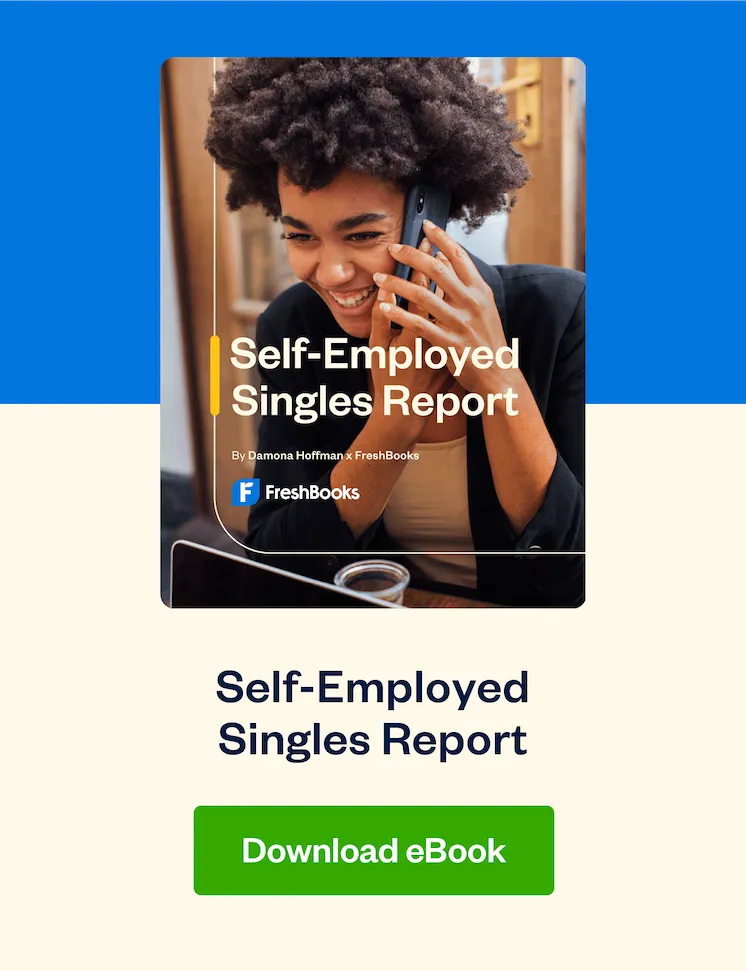In the red from rising prices? Try these 7 tips to minimize the impact of inflation on your business.

As a consumer, you’ve probably heard how inflation affects the prices of the things you buy. And in recent months, your bank account has likely felt the effects of rising prices, especially after a trip to the grocery store or gas station.
Inflation measures the increase in prices for goods and services over time. As prices rise, the purchasing power of consumers and businesses goes down—which means they get less than what they used to for the same amount of money. So, when your everyday grocery purchases cost more than last year, you can thank inflation for that.
As a business owner, inflationary times can be detrimental. Not only does it mean reduced profits, but every dollar you make is less valuable than the day before.
With inflation reaching new highs in recent months, let’s take a look at how inflation affects your business—plus the 7 things you can do to protect yourself.
Table of Contents
How Does Inflation Impact Small Businesses?
According to a joint report from the U.S. Chamber of Commerce and MetLife, 86% of small business owners are concerned about the impact inflation will have on their business.
And for good reason: Companies that aren’t adequately prepared stand to lose a significant portion of their revenue and market share—or even go out of business. In fact, a different survey conducted by the review website Digital indicated that 65% of small businesses expect to close permanently if inflation increases.
However, inflation affects every industry differently. How it’ll impact your business depends in part on what kind of business you have.
For instance, companies with essential offerings—such as gas stations or grocery stores—will be less affected by inflation than those that provide discretionary ones. After all, we’ll always need gas and food for the foreseeable future, regardless of the state of the economy. On the other hand, nonessential purchases like beauty products and entertainment are often postponed or abandoned when wallets are light and budgets are tight.
But regardless of what kind of business you own or what industry you’re in, you can typically expect to see some or all of the following during high inflationary periods.
Increased Costs
As inflation goes up, so does the cost of everything else—including business essentials like materials, transportation, distribution, utilities, and even employee wages.
The U.S. Chamber of Commerce and MetLife survey found that, due to inflation, 74% of small business owners report that rising prices have significantly impacted their business in the past year. Perhaps as a result, another 76% of respondents are having difficulties managing these unexpected price increases.
These additional expenses eat into a company’s profits, which can then, in turn, inflict financial stress on the organization. Businesses unable to absorb the increased costs are forced to increase their prices to maintain their margins—a phenomenon known as cost-push inflation.
Disrupted Supply Chains
When the supply of raw materials needed for their products decreases and the demand for the products remains the same, this shortage of material can cause supply chain disruptions for a company.
And with fewer goods available, businesses may find themselves paying more for whatever amount is left—often driving up the price of the finished product as well. This type of inflation is called demand-pull inflation.
Higher Borrowing Rates
When inflation goes up, so do interest rates. This is because central banks like the U.S. Federal Reserve use interest rates as a tool to prevent runaway inflation and economic growth.
Interest rates determine how much it costs to borrow money through, say, loans or lines of credit. Less money borrowed means less spending power for businesses and consumers, and this works to reduce the demand for goods and services throughout the entire economy.
But because higher interest rates are a direct result of inflation, this makes it more expensive for companies to borrow money as well.
Disgruntled Customers
When businesses increase their prices to account for rising costs to produce or sell their offerings, they essentially pass these costs on to their customers. This often reduces consumer spending for the product or service in question and angers some buyers.
Some of them, for example, may get upset that they now have to pay more for the products or services they already use. Others may decide not to purchase them at all anymore, whether due to diminished feelings of brand loyalty or simply being unable to afford the new prices.
Like with businesses, high inflation rates become a burden for consumers who struggle to pay for the essentials they need to survive and lead a meaningful life.
7 Ways to Protect Your Business From the Effects of Inflation
A recent Kiplinger report states that the U.S. inflation rate soared to 9.1% in June—the highest it’s been since 1981—and will likely stay near the 9% mark for the rest of 2022. So, it’s very likely that sustained inflation and its far-reaching effects will continue to impact the economy for the foreseeable future.
Some good news: Although you can’t control inflation, you do have some control over how it affects your business. Keep reading for 7 strategies to help safeguard your company from rising costs in the months ahead.
1. Reassess Your Prices
Despite the problems they can cause your business, periods of high inflation are a great time to review your pricing strategy and decide whether to raise prices to match the current inflation rate.
First, compare your offerings and prices with your competitors to see whether a price increase makes sense for your business. Are you offering better quality products or services for a lower cost? If so, you may find your customers are more than happy to accept your new price because of the value you deliver.
Of course, if the cost to deliver your goods or services has gone up, it may be wise to raise prices to protect your business and keep up with the latest economic changes.
But if the idea of raising prices makes you feel uneasy, know that other businesses are doing the same. In its second quarter Main Street Index, financial firm CBIZ revealed that 61% of Main Street businesses increased the prices of their offerings by at least 5%, while another 29% raised them by 10% or more.
Just be careful how you communicate these price changes with your customers. Otherwise, you may alienate valuable supporters during an especially sensitive time for your business.
Read this blog post on pricing increases to learn how to do this the right way. There, you’ll also find a letter template you can use to notify your customers of your higher prices—without driving them away.
2. Reevaluate Your Product Offerings or Revenue Streams
As an alternative to raising your prices outright, you may decide to focus your efforts on selling goods and services that are more popular with customers or boast higher profit margins.
Start by looking at your offerings and determine which ones have been most profitable for your business. If you’ve also been affected by higher costs, now is a great time to see which ones currently have lower profit margins.
Also, consider how other factors, such as supply chain issues or employee turnover, may affect your ability to deliver your products and services in the current economy. If needed, cut back or discontinue lower profit offerings so you can redirect valuable resources to the ones that will bring in more money for your business.
Finally, ensure you understand how these changes may affect your business, both short-term and in the long run. Inaccurate forecasting (or a lack of it) may cost you your company.
3. Outsource Work for Greater Efficiency and Productivity
Most businesses will want to use times of higher inflation to be strategic in how they use their funds. The leaner your operations, the better. In addition to reviewing your pricing strategy and product offerings, think of ways to do more in your business with less.
For instance, The Harris Poll found that 27% of companies surveyed adopted technology to automate their processes. Another 18% of respondents outsourced some of their work instead.
Follow their lead and invest in new technology to support your team during these unpredictable times. Accounting software like FreshBooks, for example, automates your team’s more tedious finance-related tasks so they can focus on higher value initiatives—thus allowing your employees to get more done in less time and with less money.
Plus, with automated systems in place, you can rely on these tools to keep your business running smoothly, even during times of rapid change or high employee turnover.
With today’s thriving gig economy, you may also want to look into hiring freelancers or consultants to do some of the heavy lifting in your business. With their upfront fees, specialized skills and expertise, and self-funded insurance policies, you may find that they make a great supplement to your in-house team without the overhead needed for full-time employees.
4. Diversify Your Entire Supply Chain
Don’t rely on just 1 supplier or vendor for your materials, especially if your business makes most of its revenue from physical products. Organizations across the globe saw their supply chains decimated at the start of the COVID-19 pandemic as their suppliers also experienced issues.
Learn from their mistakes (or your own, if you found yourself in this situation) by diversifying every step of your supply chain.
With multiple suppliers, you won’t find yourself at a disadvantage if 1 of them experiences delays or increases its prices. During periods of high inflation, you’ll also put yourself in a better position to bargain with them for lower rates or more favorable terms.
5. Buy in Bulk Ahead of Time
For all of their benefits, just-in-time (JIT) supply chains may actually hurt your business during periods of increased demand and low supply.
If you have the funds to do so, make a point to purchase supplies or materials that are critical to your business in bulk ahead of time, rather than restocking or repurchasing when needed.
Increased costs during inflationary periods mean it will cost you more to buy the same amount of material later on. And if supplies run low, you may not be able to purchase them at all. Buying in bulk ensures you can continue manufacturing and selling your products without any issues, which can potentially give you a leg up on any of your competitors that weren’t so proactive.
If that wasn’t enough to convince you, this strategy comes with even more benefits for you to consider. When you buy in bulk, you ensure that all of the needed material arrives at once—reducing your risk of shipping delays. Additionally, you may be able to negotiate a lower price with suppliers when you buy large quantities of products.
6. Be Proactive in Securing Business Funding
Because central banks use interest rates as a way to combat inflation, it’s essential to think ahead if you plan on borrowing money for your business now or in the near future.
As mentioned earlier, higher interest rates will increase your cost of borrowing. So, it may be beneficial for you to apply for a small business loan or line of credit now so you can lock in a lower interest rate and pay less over time.
If you have any adjustable-rate debts, now is the time to convert them into fixed-rate loans as well. With fixed-rate loans, you lock in your interest rate upfront. Even when inflation rates change, your interest rate stays the same.
Conversely, with adjustable-rate loans, how much you pay in interest fees will depend on the current interest rate set by the government—which may very well increase in the future to keep up with inflation.
7. Reduce Expenses
Because rising inflation drives up prices for goods and services across the board, it’s important to keep enough cash on hand to deal with these changes. Keeping your funds locked up in illiquid assets means they’ll be difficult to convert into money if you suddenly run out of it, need to cover unexpected expenses, or simply want to take advantage of a short-lived opportunity.
If you haven’t already, make sure you understand how much your business needs to stay afloat during these uncertain times. (And if you haven’t made adjustments to your calculations to account for the current state of the economy, do so now.)
Then, look for ways to cut costs and reduce unnecessary spending so you can save more money for when you need it. Digital’s survey revealed that, in order to reduce expenses, small business owners:
- Took a pay cut during the past year (40%)
- Reduced employee salaries (31%)
- Changed products or services (30%)
Other areas to audit include marketing and production costs, office leases, supplies, subscriptions, and travel expenses.
If possible, consider consolidating or paying off your debts, so you’re no longer liable for interest and additional fees. And, of course, ensure the cuts you make prioritize your current business goals while keeping in mind your future ones.
Preparing for Inflation: Business Lessons to Remember
As most of us have learned over the past 2 years, it’s important to remain flexible in the face of uncertain economic conditions.
Inflation can impact your business in many ways. If you’re determined to weather high inflation periods (and emerge stronger on the other side), you’ll need to understand what exactly you’re dealing with.
With these tips above, examine every aspect of your business and devise a game plan so you can come out on top—no matter what the next few months throw at you.

Written by Feli Oliveros, Freelance Contributor
Posted on August 8, 2022

 Is It Time for a Price Increase? Here’s How to Tell Your Clients
Is It Time for a Price Increase? Here’s How to Tell Your Clients The 7 Most Important Financial Numbers You Need to Track to Grow Your Business
The 7 Most Important Financial Numbers You Need to Track to Grow Your Business Stressed About the Future of Your Business? You Need Cash Flow Forecasting
Stressed About the Future of Your Business? You Need Cash Flow Forecasting





